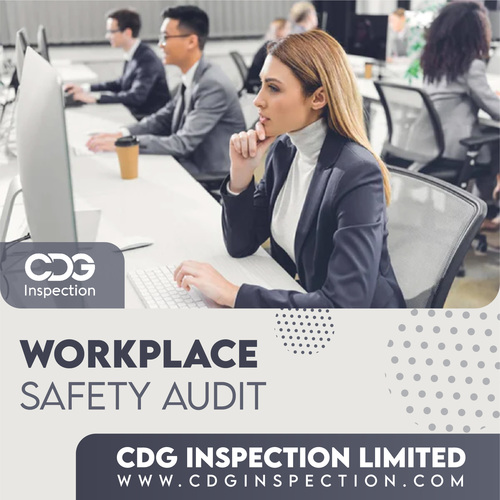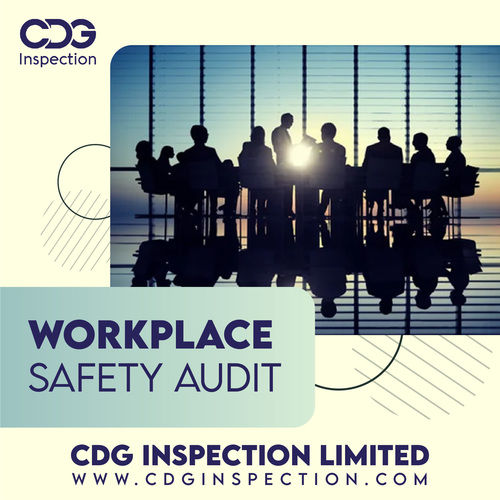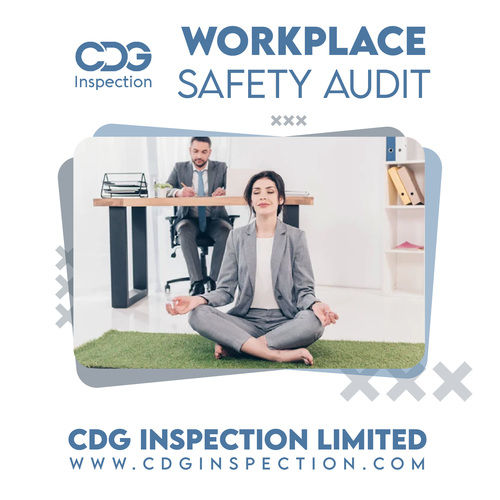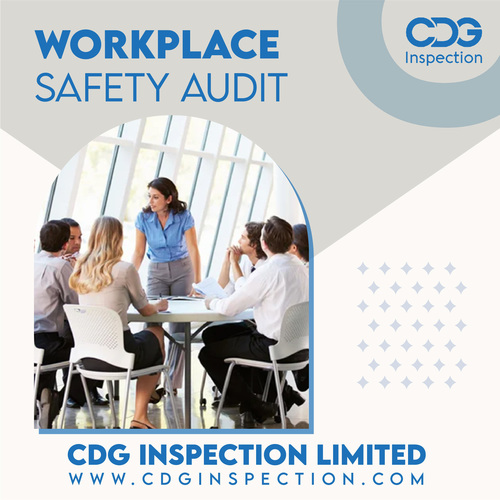Workplace Safety Audit in Ghaziabad
Workplace Safety Audit in Ghaziabad Trade Information
- Payment Terms
- Cheque
- Main Domestic Market
- All India
About Workplace Safety Audit in Ghaziabad
As well as identifying gaps, health and safety audits are important for challenging the benchmarks you have set out in your safety management system. They are really helpful for coming up with actionable steps you can take to improve your business safety, and can be used to, Document that your safety management system complies with legislation, Test if your safety management system is achieving its objectives, See if your safety management system is maintaining the performance criteria and the auditing system is effective, Assess whether your organisation has completed any previous modification compliance audits, when necessary. Constantly improve your organisation. There are many types of safety audits, but the two most widely used are, Management system audits, Safety function audits. A management system audit is horizontal. This means it looks across the entire company structure and considers the broad, in depth scope of management policies and procedures that are in place to manage the organisations health and safety at the site. Management system audits are typically assessed against the following standards, ASNZS 4801 Occupational Health and Safety Management System. ISO 45001Occupational Health and Safety. OHSAS 18001 Occupational Health and Safety Management System. ISO 14001 Environmental Management. ISO 9001 Quality Assurance. Most internal health and safety audits can follow a six step proces1. Identify Areas to Audit, First things first, you need to make a note of each area of the business that should be audited. Some areas have simple processes, while others are more complex. Its important that an internal audit does not try to do everything at once. Whatever the area of focus, you should use a systematic and disciplined approach to their work according to The Institute of Internal Auditors. You also need to set benchmarks and standards, and make sure everyone agrees on them before the audit takes place.2. Decide How Often to Audit, Choosing how often to audit will depend on the size of your business, the industry you are in and if your work environment is continuously changing like a construction site. However, some timings are decided for you, for example HACCP audits must be completed quarterly. It is likely that some areas of your business will need auditing more often than others as they carry higher health and safety risks. Your safety management system should outline how often you need to audit different areas, but you may wish to change the frequency i.e. from quarterly to monthly, or monthly to weekly depending on the risks. Once you know how often you want to audit each area, put it in your calendar. It is easy for the months to roll past and for internal audits to not happen, so schedule them out for the year ahead. Send out a copy of the calendar so an upcoming audit is never a surprise to staff.3. Conduct the Audit, Again, the audit process will look different depending on your organisation and the area being audited. You may need to test equipment, or ask staff to explain a process and compare it to what is written on the policy to assess competency and potential training shortfalls. Start with a kick off meeting. The kick off meeting isa good opportunity to introduce the audit team and key participants, explaining the purpose and approach of the audit, and establishing the required communication protocols. Carry out infield observations and interviews. Infilled observations do not mean hiding behind equipment with your camera ready to snap someone being noncompliant. The approach should be casual and inclusive to understand how the processes work in reality. Likewise, interviews should not feel like interrogations, they should be in the field with the people that are most familiar with the processes. Collect evidence. Collecting evidence is important as it helps demonstrate the outcome of the audit and can be used to help improve the system in the future or celebrate the success you are achieving. Evidence could be completed documents, photos, and interview statements.4. Document the Results, Take notes as you go to help you write your report. You need to review any collected documents and notes, and comprehensively write up your findings.
Product details
| Service Mode | Offline |
| Location | Gurgaon & Delhi NCR |
| Inspection Service For | Workplace Safety |
| Inspection Interval | 3 Months |
| Usage/Application | Commercial |
| Mode of Report | Hard Copy,Soft Copy |
Comprehensive Safety Audits for Local Industries
Our workplace safety audits cater to all industries in Ghaziabad and nearby areas, addressing the unique safety needs of manufacturing units, IT companies, warehouses, and construction sites. Certified safety auditors ensure every aspect of your workplace and equipment is thoroughly inspected, providing you with reliable guidance to enhance safety standards and achieve compliance.
Detailed Audit Reports and Post-Audit Support
After every audit, clients receive a comprehensive report detailing findings, areas for improvement, and prioritized recommendations. Our service extends beyond the audit, offering post-audit consultation and customizable safety training modules. This ensures your staff are equipped with the latest safety knowledge, supporting long-term workplace safety and regulatory compliance.
FAQ's of Workplace Safety Audit in Ghaziabad:
Q: How is the workplace safety audit process conducted in Ghaziabad?
A: Certified safety auditors follow established protocols as per IS 14489, OHSAS 18001, and ISO 45001. The process entails on-site inspection of the workplace, equipment, and emergency preparedness systems, followed by comprehensive documentation and a detailed reporting of findings and recommendations.Q: What specific areas are covered during the safety audit?
A: The audit scope includes workplaces, associated equipment, and all emergency preparedness measures. It encompasses detailed inspection and assessment to evaluate compliance and identify potential hazards or improvement areas.Q: When can I expect to receive the audit report and recommendations?
A: You will receive a detailed audit report with actionable recommendations within 7 working days after the conclusion of the audit, ensuring timely access to critical compliance and safety insights.Q: Where is this workplace safety audit service available?
A: Our safety audit services cover the entire Ghaziabad region, including nearby areas, catering to industries such as manufacturing, IT, warehousing, and construction.Q: What type of support is provided after the audit?
A: Post-audit, we offer consultation support to help you implement recommendations. Additionally, customizable training modules are available to enhance workplace safety awareness among your teams.Q: How does the audit benefit my organization?
A: Regular safety audits help identify workplace risks, ensure compliance with statutory standards, and foster a safer work environment. This leads to reduced incidents, enhanced employee confidence, and easier certification with relevant safety standards.Q: Is my organizational information kept confidential during the audit?
A: Absolutely. We maintain 100% data confidentiality for all clients, ensuring your business information and audit details remain strictly protected throughout the process.

Price:
- 50
- 100
- 200
- 250
- 500
- 1000+

 Send Inquiry
Send Inquiry






 Send Inquiry
Send Inquiry Send SMS
Send SMS